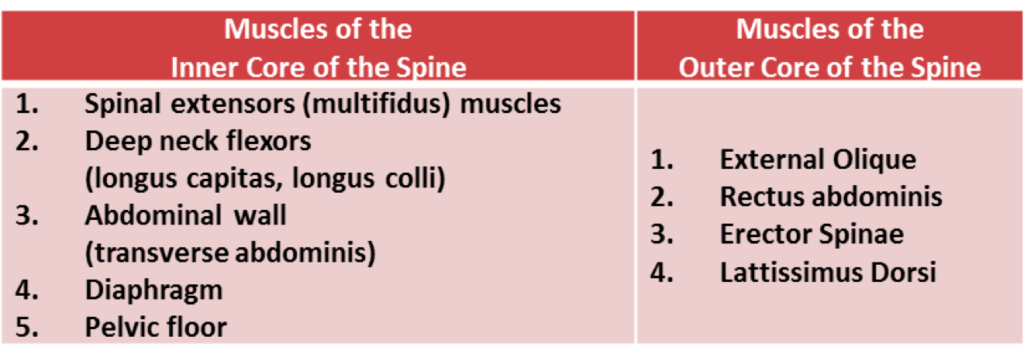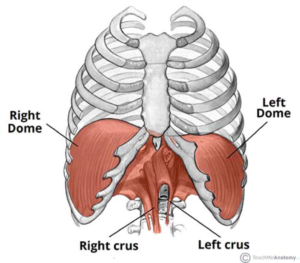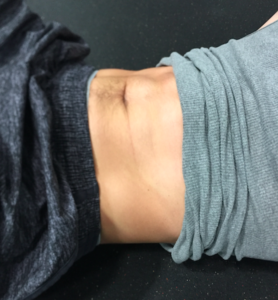Improve Your Core by Learning How to Belly Breathe
 By: Dr. Rachel Jakubowski
By: Dr. Rachel JakubowskiPhysical Therapist
SPECTRUM, Inc
When people are told “you need to strengthen your core” they automatically think about ways they can strengthen their rectus abdominis (the six pack, sexy beach body abs). Yes, we need that muscle to be strong but when I see clients with a core deficiency it’s usually coming from the what we call, the “inner” core.
Your core is split up into two systems:
- The Global/superficial muscular system
- The Local/deep muscular system
Each system has a different role. The role of the superficial system is to provide general trunk stabilization through movements. It allows you to bend, twist, and produce force during activities such as throwing, kicking, and hitting activities. Conversely, the deep muscle system provides segmental stability at the spine because these directly attach to the spine. They are working behind the scenes to make sure that each segment of the spine is held in place so when your superficial system bends, and twists the trunk each segment of the spine doesn’t experience any abnormal movement or pressure. They are supposed to contract before your outer musculature.

http://functionalmovement.com/articles/Fitness/406/core_composition_and_function_the_core_of_2014_part_1
There are several muscles that comprise the inner core but I am going to focus on the diaphragm.
However, I do want to make one comment about the pelvic floor.. Stress incontinence is the unintentional loss of urine that occurs when physical movement or activity (such as coughing, sneezing, running, or heavy lifting) puts pressure on bladder. Urine leakage indicates a pelvic floor dysfunction so you might want to see a pelvic health specialist or try to do Kegels daily.

http://teachmeanatomy.info/thorax/muscles/diaphragm/
The diaphragm is primarily used for respiration but part of its function is to stabilize the spine. The diaphragm, in addition to the transversus abdominis, pelvic floor and lumbar extensor muscles, all act to increase intraabdominal pressure in the abdominal cavity and protectively stabilize the spine.
Here are some ways to recognize that you have a diaphragm issue:
- You tend to hold your breath when exercising
- You are a chest breather
- You are abnormally “shaky” when performing exercises such as planks, dead bugs even in the first set
- When you are performing an exercise such as a sit up/crunch (or a deadbug and plank) you will notice your 6 pack abs forcibly protrude centrally with a visible drop on the sides of your abdomen. Your abs will naturally bulge out a little, but it should form more of a steady concave line from the left to the right (see picture below).

A weak diaphragm can be associated with low back, shoulder, neck, hip pain, etc. If your core doesn’t do its job then extra stress will be placed on other parts of your body.
Below are some ways you can test how strong your diaphragm is:
Diaphragmatic Breathing Progression from Stomach to kneeling. You should be able to belly breathe in each one of these positions. The further you get from the ground the more difficult it is to control your breathing.
If you are mastering the positions in the previous, try challenging your diaphragm through some static dynamic movements. Try the exercises below. Make sure you aren’t holding your breath and are breathing ONLY into the belly. Descriptions and reps/sets are located underneath the videos.
Dead Bug
Quadruped Knee Lift Off
Quadruped Knee Lift Off with Lateral Walks
The diaphragm is a powerful muscle that tends to get neglected too often, so try to change up your core routine by adding some belly breathing to the mix. It could be the difference in alleviating your pain and improving your performance. For more information feel free to contact me at Jakubowski@spectrumsp.com or 321-218-0345. We also provide free evaluations so if you are in pain don’t hesitate to call.
Leave a Reply